
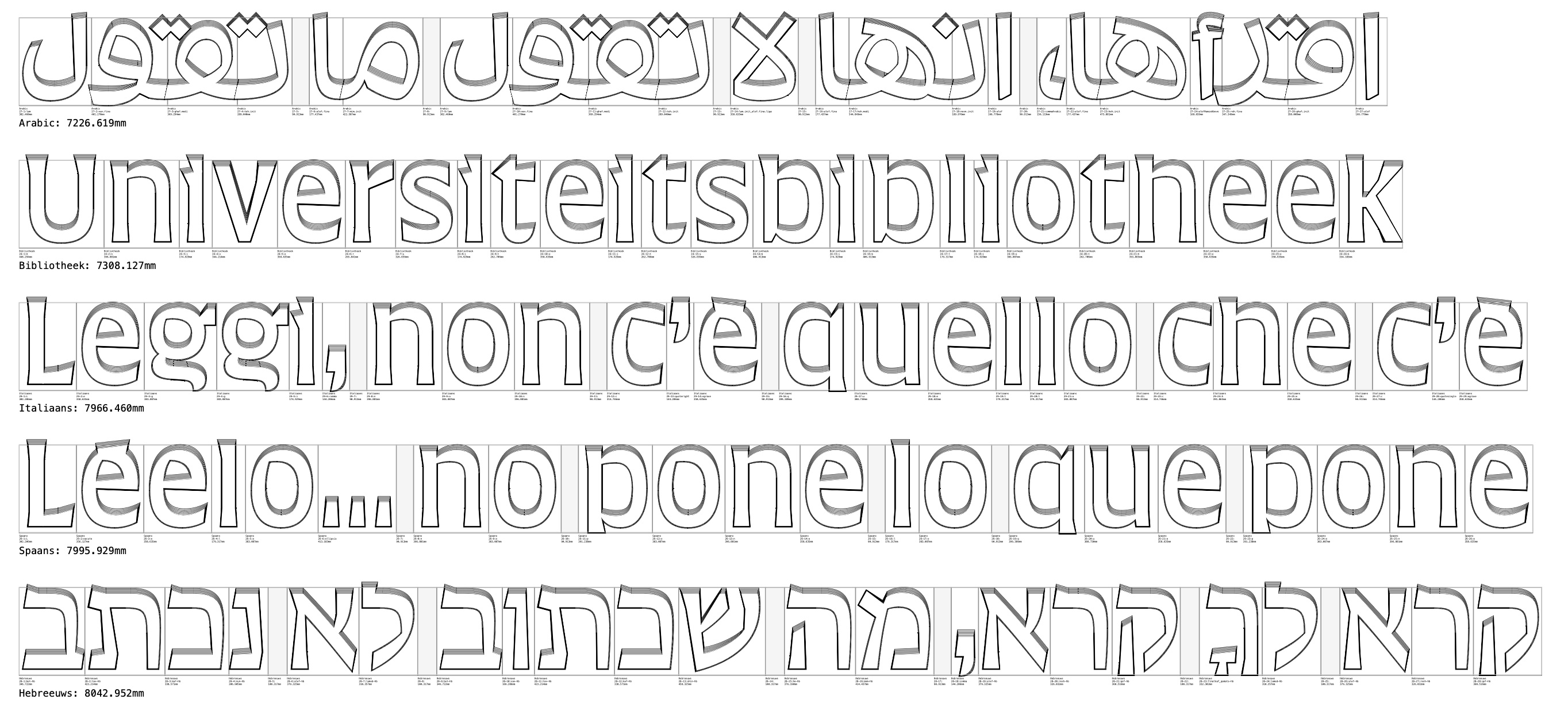
The University of Amsterdam, UvA, has started construction of a new library designed by MVSA architects. The building, on the corner of the Binnengasthuisstraat and the Doelenstraat, is to get a “facade screen”, a sort of transparent veil, to protect the privacy of local residents and library users. The architect’s design for the bronze-coated screen was part of the permit application submitted to the municipality of Amsterdam.
After explorations of different textures and abstract shapes, the university selected a line by the Dutch writer Martinus Nijhoff: “Lees maar, er staat niet wat er staat,” which the English department of the UvA translated to: “But do read, it doesn’t say what it says”. A nice choice as it invites readers to be curious and not accept texts at face value. Each language department of the university made a translation of the line and the final design includes 23 languages in six different writing systems.
The UvA asked for a proposal for the typography of the text and a design for the type. As the languages included Greek, Hebrew, Cyrillic and Arabic, a number of type designers (and TypeMedia graduates) became involved: Aleksandra Samulenkova, Anya Danilova, Bahman Eslami and Daniel Grumer.
Deep dive into process: my lecture at TypeLab 2022 at Vimeo
The facade screen consists of horizontal beams fixed to the front of the building, between which the letterforms are mounted. The text could not be all-caps and this created an interesting problem in terms of proportion; the solution was to make the descenders and ascenders very short. The whole facade consists of twenty-one lines, each 48 meters long. Over a kilometer of lettering! Nothing about this project is small.

Solid letters rendered only using their shadows. This was made for a limited edition print.
I drew the typeface with a touch of the broad-nib contrast, with very sharp terminals. Early designs had a weight axis so that the architects could make an informed decision about the density of the letterforms, which is important when they are being used as a screen. The very short ascenders and descenders also increased privacy. Being incorporated into a building had yet another impact on the design: the tops of the letters had to have a 15° incline to ensure a good water run-off. We will see how that works.
Not a regular extrusion. This shows an interpolation from the front to the back. Observe how the weight increases most along the horizontals.
The Arabic design by Bahman Eslami had to make some compromises to fit in the available vertical space. Daniel Grumer signed up for the Hebrew design that is also be used for the Yiddish translation. Together with the Faculty we decided to leave most of the diacritical marks. Having three right-to-left languages in the layout proved another interesting challenge: these cannot be hyphenated, so the layout had to take that into account.

Proof showing the languages, the justification changes (in pink) and the rules (orange).

A map of all the languages ditributed on the wall. This was a bit of a puzzle. Most languages appear four to five times.
Python (another language from Amsterdam!), was used to calculate the lines, handle the justification and produce the output. Straight from RoboFont and UFO to PDF and STL. Drawbot was instrumental in proofing and building the layouts. The final data from me was in PDF and the 3D data for the printing was created by MVSA and NedCam.
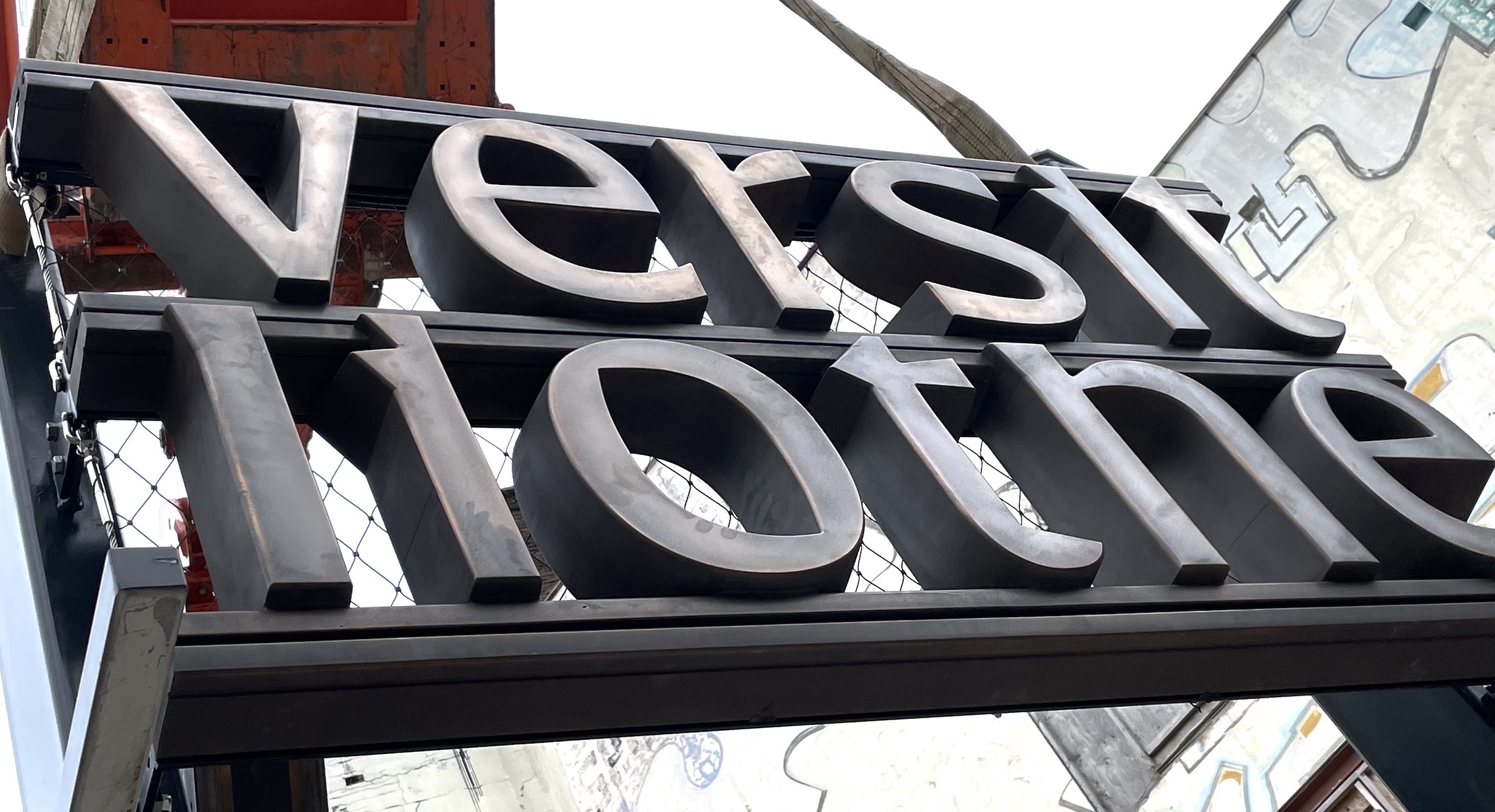
October 2021, detail of the test letters produced for approval. Photo: EvB
A limited number of letters were produced at full size to present to Amsterdam municipality officials on 1 September, 2021. The letters were bolted to a small section of the steel construction and hoisted by a crane to the correct height in order to assess the letters at their proper perspective. It was great to see the sharp terminals caught the light. And the bronze coating looked nice. The test was a success and 3D printing could begin.
November 2024, construction of the new university library is well on its way.
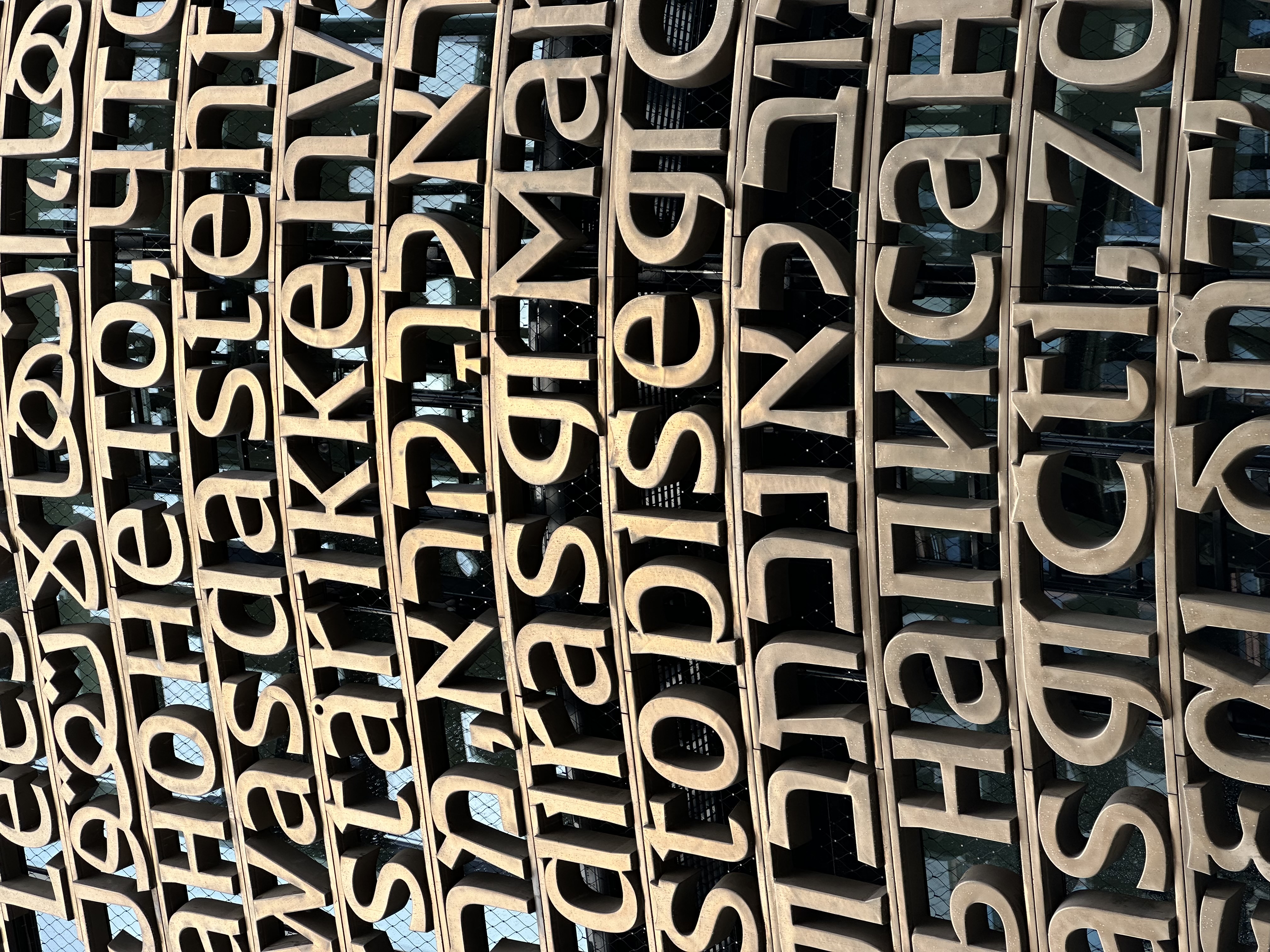
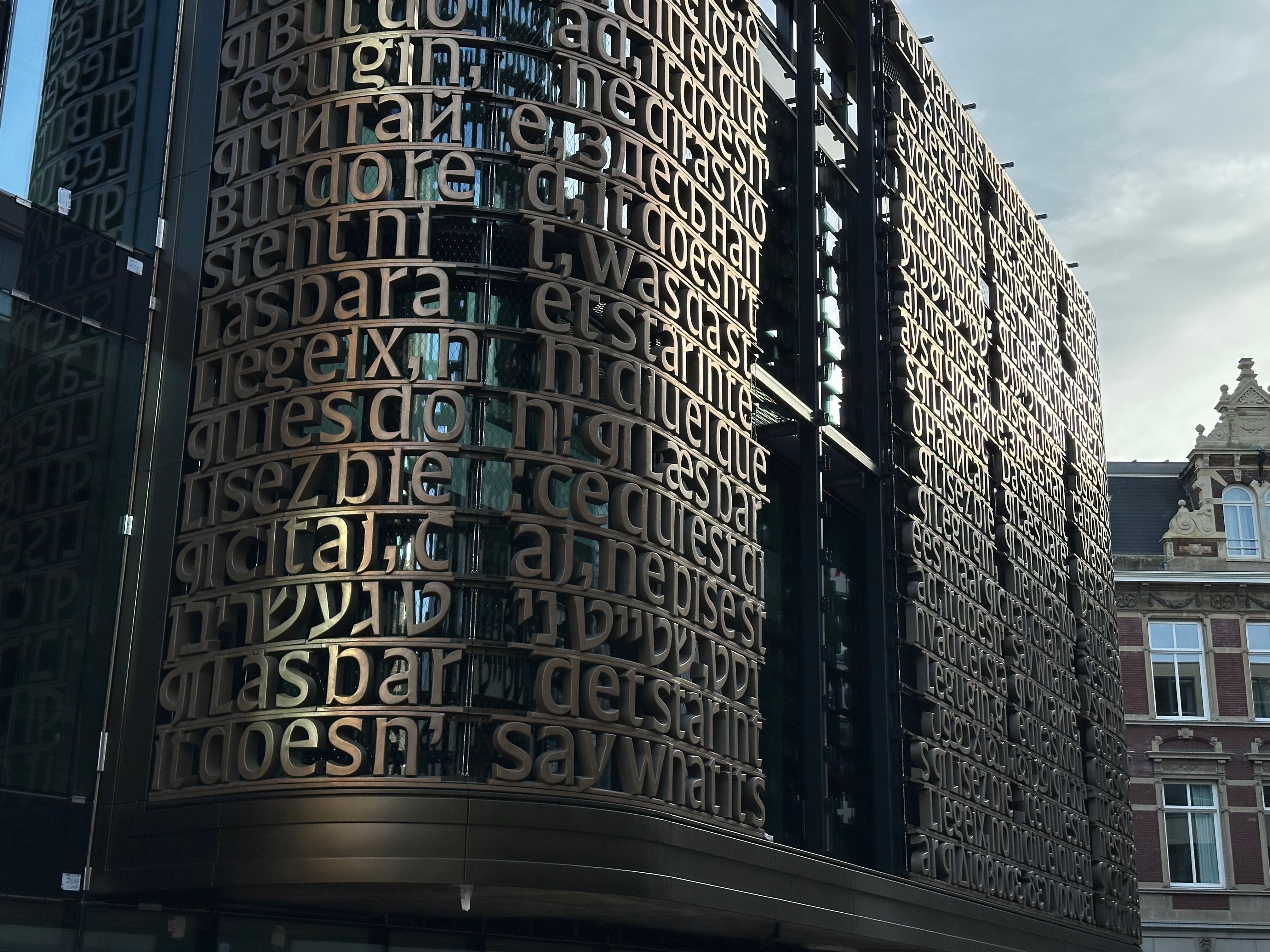
November 2024. Big sections of the lettering are in place. Trucks and cranes. The streets are quite narrow, the letters reflect the light from unexpected directions. Photo: EvB
The typeface, and the layout of the lines were designed by Erik van Blokland. Based on the Latin Aleksandra Samulenkova drew the Modern and Classic Greeks, with help from Irene Vlachou. Anya Danilova drew the Cyrillic. Bahman Eslami drew the Arabic. The Hebrew and Yiddish were drawn by Daniel Grumer. The Cuneiform for the Hittite was drawn by Erik van Blokland, with Prof. dr. J.J.M. Hazenbos.
Simone van den Brink Huisvestingsontwikkeling, Alex ter Haar Projectmanager, Mathieu Lommen conservator Allard Pierson and Irene Zwiep Amsterdam Institute of Humanities Research.
Blender visualisations and 3D consultant: Lars van Blokland
Harry van den Berg and Ana Carmen Gutiérrez Narvarte were the MVSA architects for this project. More details about their work, including the other buildings at the MVSA website.
Nedcam in Heerenveen is responsible for the production of the letters, together with BINX Smartility, MVSA Architects, Fiberneering, JC Straaltechniek BV and VeroMetal. Nedcam made a nice video
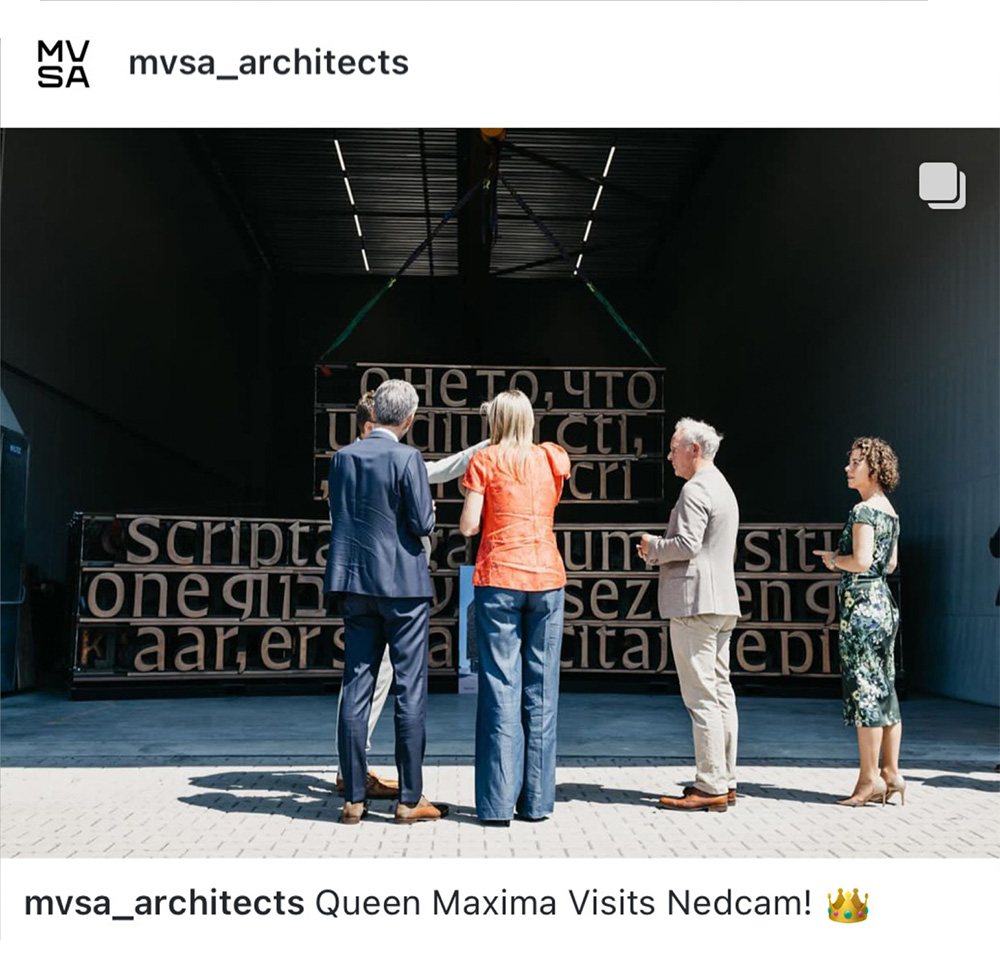
July 2024. Queen Maxima visits Nedcam and has a look at the printed letters. Source: Instagram post by MVSA, @mvsa_architects